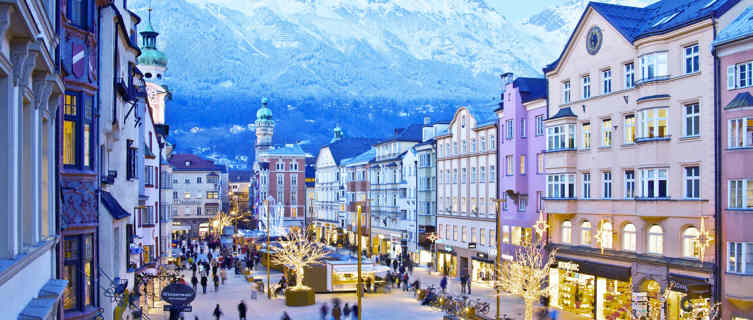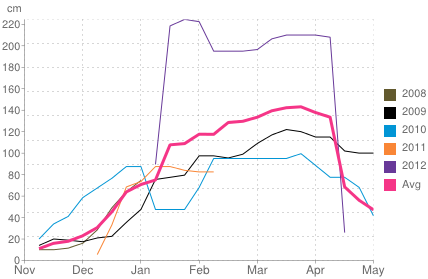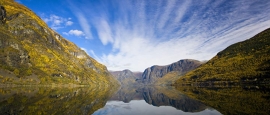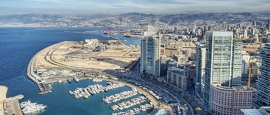Best for
Latest features

Innsbruck ski resort
Innsbruck, which is known not only as the capital city of the Tyrol but also the capital of the Alps, offers a fairly unique winter holiday proposition.
Firstly, it is unusual for most skiers to be based in a major city during a ski holiday. Innsbruck is a historic and vibrant university city with hundreds of shops, restaurants and numerous other year-round attractions. Additionally its proximity to Innsbruck Airport, a major international air hub, means you can be on the slopes within an hour of landing.
And then there’s the skiing itself; there are nine separate ski areas to explore within the Innsbruck ski resort area, all of which are included on a single, reasonably priced, lift pass that also covers bus travel between the city and slopes.
Innsbruck’s significance in world skiing cannot be understated. Twice host of the Winter Olympics in 1964 and 1976, it also became the first city to host three Winter Olympics when it staged the world’s first Winter Youth Olympics in 2012.
Despite all of this, Innsbruck is busier in summer than winter – the reverse scenario to traditional ski resorts – meaning accommodation prices actually drop in the winter months, a welcomed sweetener for skiers.
On the slopes
Innsbruck’s advantage in having nine ski areas on the Olympia SkiWorld lift pass means skiers can opt to go where the snow is best. The downside of that is if snow cover is generally bad, everyone will cram into the one area – usually the snowsure Stubai Glacier, with lifts ascending to 3,200m (10,400ft). Kühtai is a second good snowsure choice though, with much of the terrain above 2,000m (6,500ft).
The other seven areas do also have relatively good snow records however; despite generally peaking 1,000m (3,250ft) lower than Stubai. The slopes here are all typically open from mid-December to early April each winter.
The choice also means there’s a wide selection of terrain, almost all of which is located between 15 and 45 minutes' drive from the city centre, and all accessible on one lift ticket. The remarkable variety adds up to around 300km (187 miles) of pistes in total, and includes the Olympic slopes of Patscherkofel at Igls and Axamer Lizum.
The Nordkettenbahn cable car goes directly from the city to the Seegrube slopes, where there are fabulous panoramic vistas. The bus-accessed slopes of Muttereralm, Rangger Köpfl or Schlick 2000 are all ideal for recreational skiers.
Freestylers meanwhile will enjoy trying the various terrain parks, including the Nitro Skylinepark, on the slopes above the town.
Despite the resort’s impressive area stats it is worth noting that each of Innsbruck’s nine areas only averages 35km (22 miles) of piste, something that could be an issue for those wanting to spend a week simply skiing from their doorstep.
Average snow depth in Innsbruck

Historical snow depth in Innsbruck
Do you have any Feedback about this page?
© Columbus Travel Media Ltd. All rights reserved. No part of this site may be reproduced without our written permission, click here for information on Columbus Content Solutions.
¿Tiene comentarios sobre esta página?
© Columbus Travel Media Ltd. All rights reserved. Ninguno de los contenidos de esta Web debe ser reproducido sin nuestra autorización expresa y escrita. Para más información sobre como obtener permiso para la utilización del contenido clica aquí. No part of this site may be reproduced without our written permission, click here for information on Columbus Content Solutions .
Avez-vous des commentairessur cette page?
© Columbus Travel Media Ltd. All rights reserved. Le contenu de ce site ne peut être reproduit sans autorisation écrite. Cliquez ici pour plus d'information sur notre 'des solutions de contenu’. No part of this site may be reproduced without our written permission, click here for information on Columbus Content Solutions.
Haben Sie Feedback zu dieser Seite?
© Columbus Travel Media Ltd. All rights reserved. Alle Inhalte dieser Seite sind urheberrechtlich geschützt und dürfen nur mit schriftlicher Genehmigung des Verlags genutzt werden. Weitere Informationen finden Sie in unseren Lizenzbestimmungen. No part of this site may be reproduced without our written permission, click here for information on Columbus Content Solutions .








 You know where
You know where